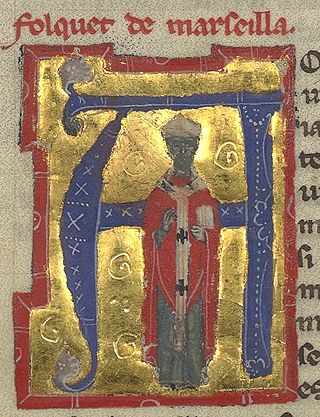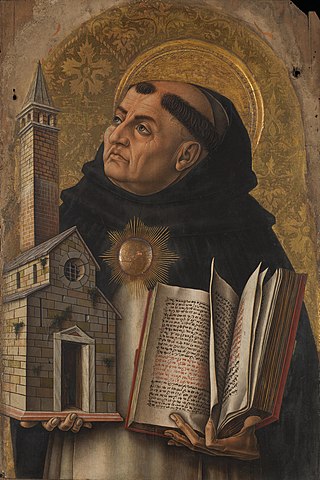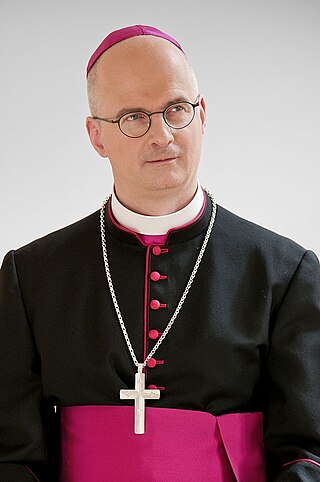
The Order of Preachers, also known as the Dominican Order, is a Roman Catholic mendicant order of pontifical right that was founded in France by a Castilian priest named Dominic de Guzmán. It was approved by Pope Honorius III via the papal bull Religiosam vitam on 22 December 1216. Members of the order, who are referred to as Dominicans, generally display the letters OP after their names, standing for Ordinis Praedicatorum, meaning 'of the Order of Preachers'. Membership in the order includes friars, nuns, active sisters, and lay or secular Dominicans. More recently, there has been a growing number of associates of the religious sisters who are unrelated to the tertiaries.

Pope Clement IV, born Gui Foucois and also known as Guy le Gros, was bishop of Le Puy (1257–1260), archbishop of Narbonne (1259–1261), cardinal of Sabina (1261–1265), and head of the Catholic Church from 5 February 1265 until his death. His election as pope occurred at a conclave held at Perugia that lasted four months while cardinals argued over whether to call in Charles I of Anjou, the youngest brother of Louis IX of France, to carry on the papal war against the Hohenstaufens. Pope Clement was a patron of Thomas Aquinas and of Roger Bacon, encouraging Bacon in the writing of his Opus Majus, which included important treatises on optics and the scientific method.

Pope John XXII, born Jacques Duèze, was head of the Catholic Church from 7 August 1316 to his death, in December 1334. He was the second and longest-reigning Avignon Pope, elected by the Conclave of Cardinals, which was assembled in Lyon. Like his predecessor, Clement V, Pope John centralized power and income in the Papacy and lived a princely life in Avignon.

Toulouse is the prefecture of the French department of Haute-Garonne and of the larger region of Occitania. The city is on the banks of the River Garonne, 150 kilometres from the Mediterranean Sea, 230 km (143 mi) from the Atlantic Ocean and 680 km (420 mi) from Paris. It is the fourth-largest city in France after Paris, Marseille and Lyon, with 504 078 inhabitants within its municipal boundaries ; its metropolitan area has a population of 1.5 million inhabitants. Toulouse is the central city of one of the 22 metropolitan councils of France. Between the 2014 and 2020 censuses, its metropolitan area was the third fastest growing among metropolitan areas larger than 500,000 inhabitants in France.

The Albigensian Crusade or the Cathar Crusade was a military and ideological campaign initiated by Pope Innocent III to eliminate Catharism in Languedoc, what is now southern France. The Crusade was prosecuted primarily by the French crown and promptly took on a political aspect. It resulted in the significant reduction of practicing Cathars and a realignment of the County of Toulouse with the French crown. The distinct regional culture of Languedoc was also diminished.

The Principality of Antioch was one of the Crusader states created during the First Crusade which included parts of modern-day Turkey and Syria. The principality was much smaller than the County of Edessa or the Kingdom of Jerusalem. It extended around the northeastern edge of the Mediterranean, bordering the County of Tripoli to the south, Edessa to the east, and the Byzantine Empire or the Kingdom of Armenia to the northwest, depending on the date.

The Summa contra Gentiles is one of the best-known treatises by Thomas Aquinas, written as four books between 1259 and 1265.
The count of Toulouse was the ruler of Toulouse during the 8th to 13th centuries. Originating as vassals of the Frankish kings, the hereditary counts ruled the city of Toulouse and its surrounding county from the late 9th century until 1270. The counts and other family members were also at various times counts of Quercy, Rouergue, Albi, and Nîmes, and sometimes margraves of Septimania and Provence. Count Raymond IV founded the Crusader state of Tripoli, and his descendants were also counts there. They reached the zenith of their power during the 11th and 12th centuries, but after the Albigensian Crusade the county fell to the kingdom of France, nominally in 1229 and de facto in 1271.

Thomism is the philosophical and theological school which arose as a legacy of the work and thought of Thomas Aquinas (1225–1274), the Dominican philosopher, theologian, and Doctor of the Church.

John Capreolus, in French Jean Capréolus and in Latin Johannes Capreolus, was a French Dominican theologian and Thomist.

Folquet de Marselha, alternatively Folquet de Marseille, Foulques de Toulouse, Fulk of Toulouse came from a Genoese merchant family who lived in Marseille. He is known as a troubadour, and then as a fiercely anti-Cathar bishop of Toulouse.

Peire Cardenal was a troubadour known for his satirical sirventes and his dislike of the clergy. Ninety-six pieces of his remain, a number rarely matched by other poets of the age.
Vincent Baron was a French Dominican theologian and preacher.

The Archdiocese of Toulouse is a Latin Church ecclesiastical territory of the Catholic Church in France. The diocese comprises the Department of Haute-Garonne and its seat is Toulouse Cathedral. Archbishop Guy de Kerimel has been its head since 2021.

Peire Raimon de Tolosa was a troubadour from the merchant class of Toulouse. He is variously referred to as lo Viellz and lo Gros, though these are thought by some to refer to two different persons. On the other hand, lo Viellz could refer to his being of an early generation of troubadours. Eighteen of Peire Ramon's poems survive, one canso with a melody.
Antoine Massoulié was a French Dominican theologian. He was uncompromising against Quietism, and Molinism.

Thomas Aquinas was an Italian Dominican friar and priest, an influential philosopher and theologian, and a jurist in the tradition of scholasticism from the county of Aquino in the Kingdom of Sicily.

Charles Morerod, O.P., is a Swiss Dominican prelate. Since 2011, he has been bishop of Lausanne, Geneva and Fribourg. Previously, he served as Rector of the Pontifical University of St. Thomas Aquinas, professor of dogmatic theology, and Secretary General of the International Theological Commission.

The Church of the Jacobins is a deconsecrated Roman Catholic church located in Toulouse, France. It is a large brick building whose construction started in 1230, and whose architecture influenced the development of the Gothique méridional style. The relics of Thomas Aquinas are housed there. In the two centuries following the dissolution in France of the Dominican Order at the time of the French Revolution, it served various different purposes before undergoing major restoration in the 20th century. In the early 21st century, it was partially converted into a museum.

Following two inquiries which involved over a hundred eyewitnesses, the Italian Dominican theologian and philosopher Thomas Aquinas (1225–1274) was formally canonized as a saint of the Roman Catholic Church on 18 July 1323 by Pope John XXII. His corpse was boiled and his remains were distributed as relics, the ownership of which was contested for decades. In 1324, he became the second most important saint in the Dominican Order, after Saint Dominic himself. In 1969, the feast day of Saint Thomas Aquinas was revised from 7 March to 28 January.















